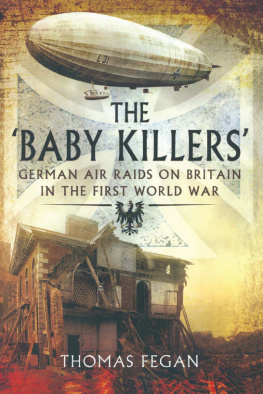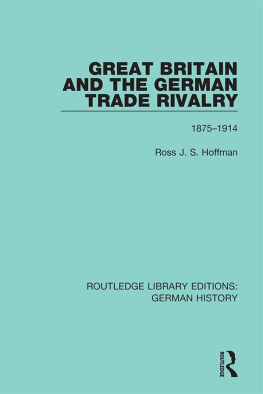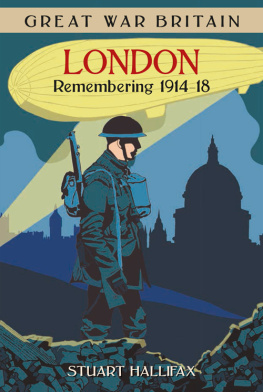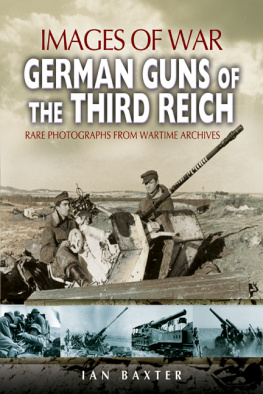THE
BABY KILLERS
THE
BABY KILLERS
GERMAN AIR RAIDS ON BRITAIN
IN THE FIRST WORLD WAR
THOMAS FEGAN
Pen & Sword
MILITARY
For my mother and father
First published in Great Britain in 2002 by Leo Cooper
Reprinted in this format in 2012 by
PEN & SWORD MILITARY
An imprint of
Pen & Sword Books Ltd
47 Church Street
Barnsley
South Yorkshire
S70 2AS
Copyright Thomas Fegan, 2002, 2012
ISBN 978 1 78159 203 8
The right of Thomas Fegan to be identified as Author of this work
has been asserted by him in accordance with the Copyright,
Designs and Patents Act 1988.
A CIP catalogue record for this book is
available from the British Library
All rights reserved. No part of this book may be reproduced or transmitted in
any form or by any means, electronic or mechanical including photocopying,
recording or by any information storage and retrieval system,
without permission from the Publisher in writing.
Printed and bound in England
By CPI Group (UK) Ltd, Croydon, CR0 4YY
Pen & Sword Books Ltd incorporates the Imprints of Pen & Sword Aviation,
Pen & Sword Family History, Pen & Sword Maritime, Pen & Sword Military,
Pen & Sword Discovery, Pen & Sword Politics, Pen & Sword Atlas,
Pen & Sword Archaeology, Wharncliffe Local History, Wharncliffe True Crime,
Wharncliffe Transport, Pen & Sword Select, Pen & Sword Military Classics,
Leo Cooper, The Praetorian Press, Claymore Press, Remember When,
Seaforth Publishing and Frontline Publishing
For a complete list of Pen & Sword titles please contact
PEN & SWORD BOOKS LIMITED
47 Church Street, Barnsley, South Yorkshire, S70 2AS, England
E-mail: enquiries@pen-and-sword.co.uk
Website: www.pen-and-sword.co.uk
Contents
My sincere thanks go to the staff of various local and national museums, libraries and record offices for their help in providing me with information. Those at the Department of Documents and the Photograph Archive of the Imperial War Museum deserve special credit for their assistance over some time. Among the many individuals to whom I am indebted, personal mention must be made of Hazel Basford and Denise Rayner, and I am particularly obliged to Tom Hartman, my editor, for his scrutiny and patience, although any remaining mistakes are, of course, my own. I would also like to warmly acknowledge my wife Sophie for her suggestions and overall support.
Every effort has been made to obtain permission to use copyright material. I am deeply grateful to the Trustees of the Imperial War Museum for allowing access to their collections, and to the individual copyright holders who have kindly given me their consent to quote from the Papers of Lance Corporal H. H. Appleton, Lieutenant A. J. Arkell, Colonel E. B. Bartley, V. Bawtree, E. S. Bennett, P. Blundstone, M. Dayrell-Browning, Major T. Gran, H. Ingleby MP, Sir Clive Morrison-Bell, Private J. W. Mudd, J. H. Stapley and Ordinary Seaman F. W. Turpin.
THE FLIGHT THAT FAILED.
THE EMPEROR. WHAT! NO BABES, SIRRAII?
THE MURDERER. ALAS! SIRE, NONE.
THE EMPEROR. WELL, THEN, NO BABES, NO IRON CROSSES.
[Exit murderer, discourajed.]
Cartoon from Punch, January 1915. Punch Publications
The Threat From Above and
Britains Defences
But what would be the security of the good, if the bad could at pleasure invade them from the sky? Against an army sailing through the clouds neither walls, nor mountains, nor seas, could afford any security. A flight of northern savages might hover in the wind, and light at once with irresistible violence upon the capital of a fruitful region that was rolling under them.
Samuel Johnson, Rasselas, The Prince of Abissinia
The German air raids of the Great War were the first of their kind. Strategic aerial bombing had never been used before and its novelty was shocking. It was viewed as terrorism rather than a legitimate act of war. It caused panic and outrage far in excess of the death and material loss that was inflicted and its psychological impact was as great as that produced by the far more devastating Blitz of the Second World War. Britons were appalled that civilians were imperilled as much as soldiers. The baby killers, as the raiders were branded, brought dismay to a nation unaccustomed to fighting at home, and confirmed that the fortress isle was no longer safe from the hand of war.
Ever since the Frenchman Louis Blriot made the first aeroplane flight across the English Channel on 25 July 1909, H. G. Wells wrote in the Daily Mail, Britain was no longer an inaccessible island. It was an ominous development, but one which many had been expecting for some time. The threat from above had preoccupied the popular imagination for several decades already, and in the late nineteenth and early twentieth centuries the public consumed a host of books about future wars and the menace of airships and aeroplanes. Wells himself wrote the most enduring of these in 1908. His The War in the Air depicted a catastrophic worldwide conflict fought by roving fleets of airships and aeroplanes. In it, a German airship fleet crosses the Atlantic to launch a devastating raid on New York, bringing the United States to the brink of collapse. In reality, of course, Germany had no such capabilities, at least not yet. But Germany was eager to develop its air potential.
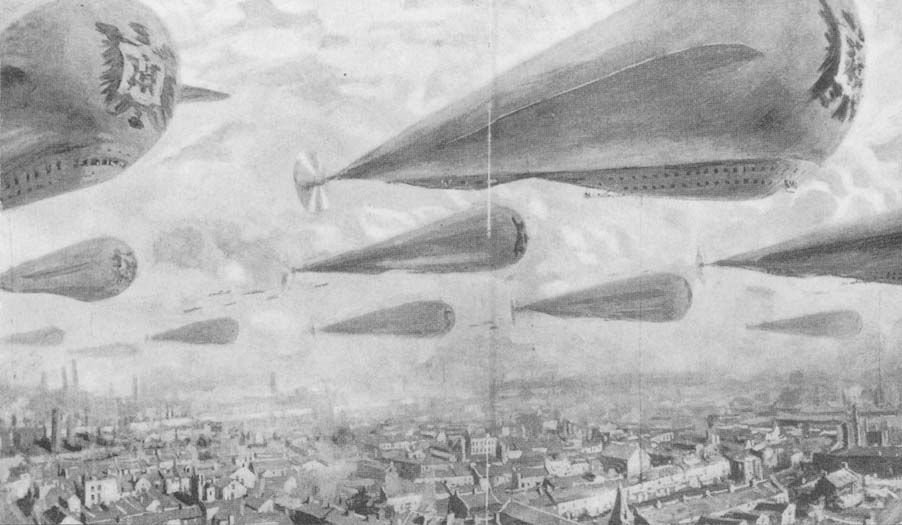
Illustration by A. C. Michael for H. G. Wells The War in the Air, depicting the massed fleet of German airships as it crosses the industrial Midlands. British Library
The man whose name was to become synonymous with airships, Graf (Count) Ferdinand von Zeppelin, pioneered the first rigid airship, which he demonstrated on 2 July 1900 at Friedrichshafen on the shore of Lake Constance in Southern Germany. Unlike earlier balloons, LZ1 (Luftschiff Zeppelin 1), as it was called, was a streamlined craft with not one single gas bag, but multiple gas cells enclosed within a fabric envelope covering an aluminium frame of girders and rings. Thus, if one or several cells leaked, there would still be enough gas for the 420ft-long airship to remain airborne. In the following years Count Zeppelin developed bigger and better versions of the airship and in 1907 LZ3 was built which was capable of eight hours flight. As such it was capable of travelling much further and longer than any aeroplanes of the time, it was more reliable and it could carry passengers or a load. Impressed, the German government funded continued research and development into the Zeppelins and the Army ordered one for themselves, LZ4. This was wrecked in a storm soon after completion, a blow that might have spelled an early end to the airship programme. However, airships had caught the imagination of the German public and such was their support that they contributed six hundred million marks for further development.
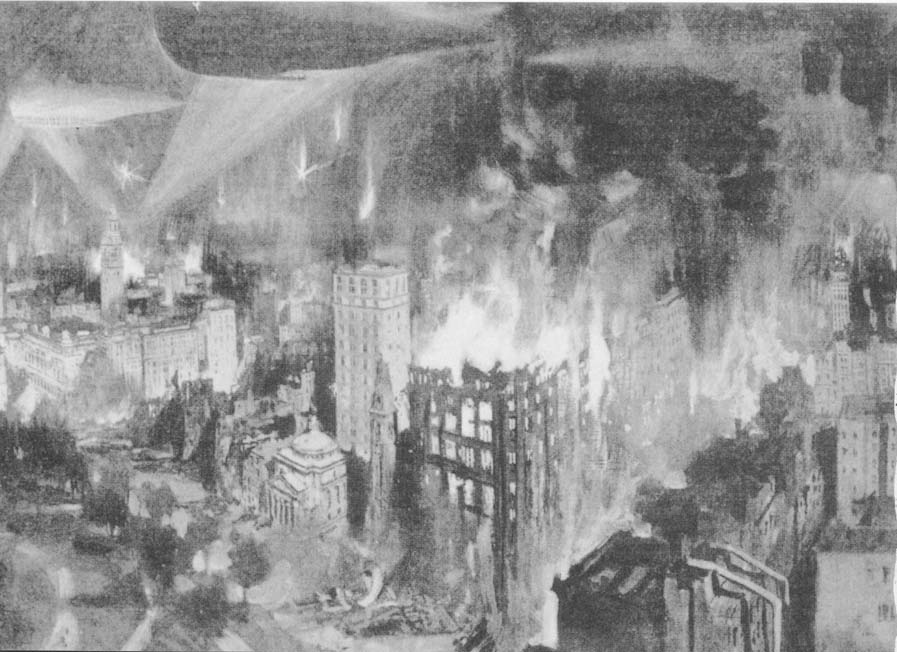
This illustration from The War in the Air imagines a devastating raid on New York carried out by the German airships. As the airships sailed along they smashed up the city as a child will shatter its cities of brick and card. Below, they left ruins and blazing conflagration and heaped and scattered dead Lower New York was soon a furnace of crimson flames, from which there was no escape.

